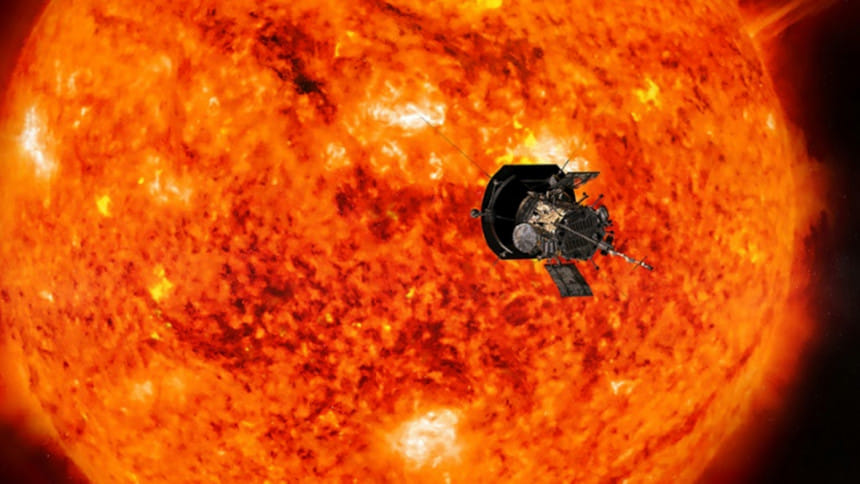Nasa launches probe to 'touch the Sun'

Nasa counted down yesterday to the launch of a $1.5 billion spacecraft that aims to plunge into the Sun's sizzling atmosphere and become humanity's first mission to explore a star.
The car-sized Parker Solar Probe is scheduled to blast off on a Delta IV Heavy rocket from Cape Canaveral, Florida early today.
The 65-minute launch window opens at 3:33 am (0733 GMT), and the weather forecast is 70 percent favourable for takeoff, Nasa said.
The probe's main goal is to unveil the secrets of the corona, the unusual atmosphere around Sun.
Not only is the corona about 300 times hotter than the Sun's surface, it also hurls powerful plasma and energetic particles that can unleash geomagnetic space storms and disrupt Earth's power grid.
"The Parker Solar Probe will help us do a much better job of predicting when a disturbance in the solar wind could hit Earth," said Justin Kasper, one of the project scientists and a professor at the University of Michigan.
The probe is protected by an ultra-powerful heat shield that is just 4.5 inches thick (11.43 centimetres).
The shield should enable the spacecraft to survive its close shave with the centre of our solar system, coming within 3.83 million miles (6.16 million kilometres) of the Sun's surface.
The heat shield is built to withstand radiation equivalent up to about 500 times the Sun's radiation here on Earth.
Even in a region where temperatures can reach more than a million degrees Fahrenheit, the sunlight is expected to heat the shield to just around 2,500 degrees Fahrenheit (1,371 degrees Celsius).
Scorching, yes? But if all works as planned, the inside of the spacecraft should stay a cooler 85 F (29 C).
The goal for the Parker Solar Probe is to make 24 passes through the corona during its seven-year mission.
"The sun is full of mysteries," said Nicky Fox, project scientist at the Johns Hopkins University Applied Physics Lab.
"We are ready. We have the perfect payload. We know the questions we want to answer."

 For all latest news, follow The Daily Star's Google News channel.
For all latest news, follow The Daily Star's Google News channel. 



Comments